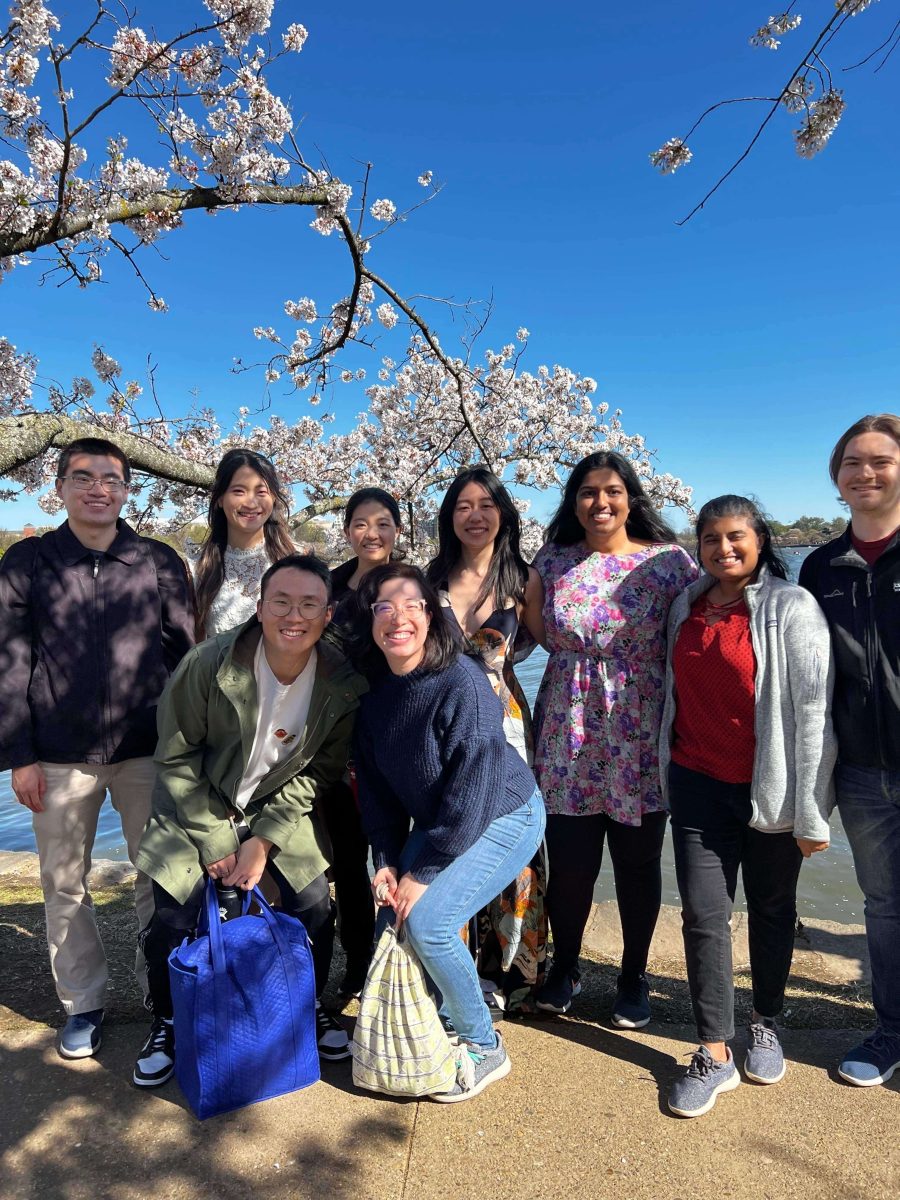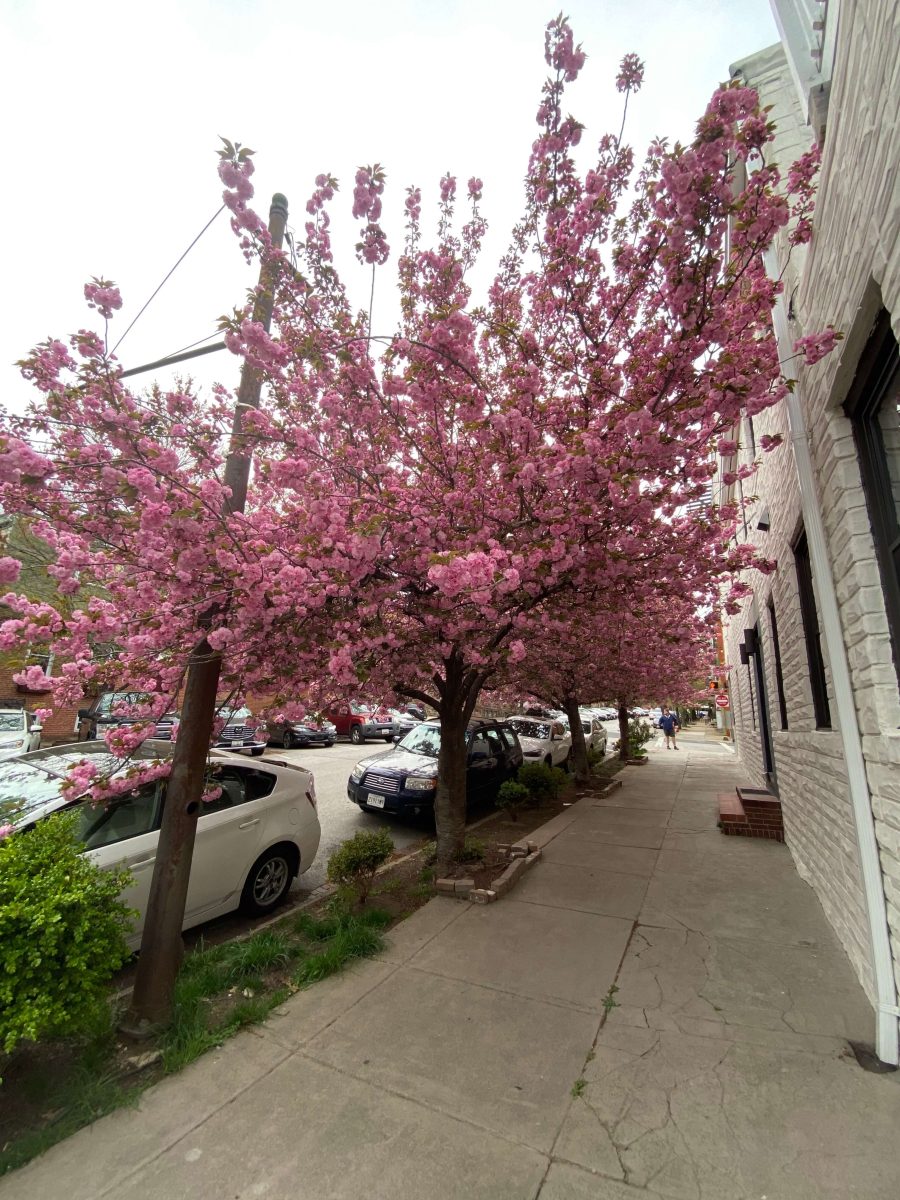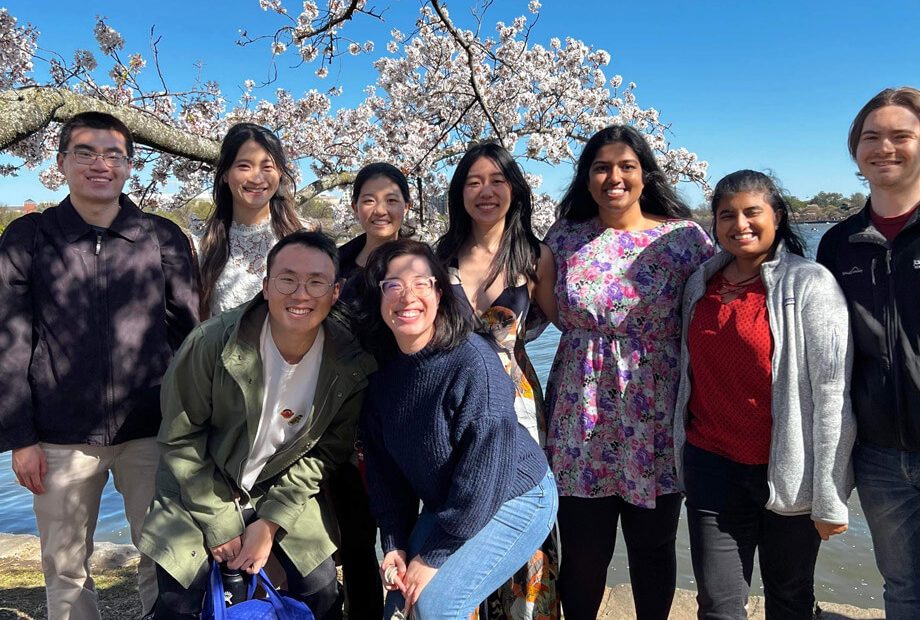Photos courtesy of the author.
One of the most beautiful parts of spring here in the mid-Atlantic is the return of the cherry blossoms. In Japan, cherry blossoms, or Sakura, are an important cultural symbol. The cherry blossom tradition in the U.S. dates back to 1912, when Japan gifted the United States more than 3,000 cherry trees as a symbol of friendship. These trees were planted across Washington, D.C., including on the White House grounds and the banks of the Tidal Basin — a large body of water that serves to flush the Washington Channel with water from the Potomac River. The Tidal Basin includes several historical monuments of interest, including the Jefferson, Martin Luther King Jr., and FDR memorials — and thousands of cherry trees, which bloom each year at around the same time as their counterparts in Japan, highlighting the friendship between the two nations. This is accompanied by the famous National Cherry Blossom Festival, which brings more than 1.5 million attendees to see the flowers, and features numerous artistic and cultural events for nearly a month throughout the D.C. area.
Each year, numerous folks from the National Park Service and enthusiastic blossom tourists begin a prediction of the “peak bloom” date, the date that 70% of cherry blossoms around Washington’s Tidal Basin will be open. Social media may have you believe that peak bloom is the only date to view the cherry blossoms, but this is thankfully not the case at all — gorgeous views of these unique flowers are available in the weeks leading up to and following peak bloom. Moreover, the Tidal Basin may be the most famous cherry blossom location around here, but it is certainly not the only location.
While my classmates and I love making the short trip down to D.C. to see the original cherry blossoms, there are many cherry blossoms to see right here in Baltimore as well. In 1931, school children planted 152 cherry trees at Fort McHenry to celebrate George Washington’s 200th birthday. Each tree was meant to symbolize one of Baltimore’s public schools — at the time, the schools were racially segregated, and the cherry trees were too. Trees planted by white students and African American students were placed in separate groves. Since then, many trees have been replanted, but the original two groves remain and are a reminder of Baltimore’s segregated history, and the segregation that unjustly remains persistent in schools even today.
Aside from historical landmarks, there are cherry trees that bloom across JHU’s Homewood and East Baltimore campuses, and throughout Baltimore City. In the middle of the semester, the busiest time for many students, the cherry blossoms are a reminder, quite literally, to stop and smell the flowers!


Related Content
- A Trip to No Land Beyond
- The Great Baltimore Ice Cream Crawl: Living in the Golden Age of Frozen Dairy
- A New Student’s Guide to Baltimore Cafes
Want to read more from the Johns Hopkins School of Medicine? Subscribe to the Biomedical Odyssey blog and receive new posts directly in your inbox.
